Osteoarthritis is the most common of the many diseases of the joints.With the development of this pathology, the patient begins to problems with limb mobility, swelling, inflammation and intense pain syndrome.And if we are talking about knee joint arthrosis at a young age, then they may contain many predisposition factors.
General information
In official medicine, the development of deformation processes in the knee joint is called gonarthrosis.The disease is accompanied by hyaline cartilage degenerative dystrophic phenomena that develop at the stage and have many problems with the patient.The main signs of the disease include:
- Pain syndrome.
- Movement Station.
- Inflammation.
- Swelling.
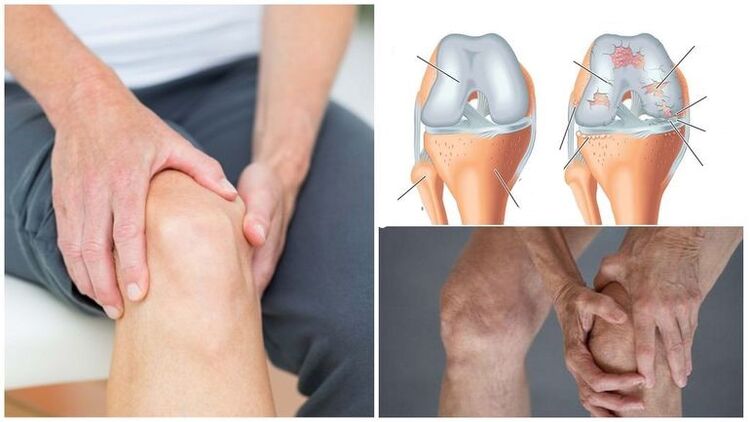
Among various forms of arthrosis, knee joint damage is the most common.In most cases, the problem develops in women under the age of 40.This can also occur in young people in the light of mechanical injuries or colossal stress.For example, professional athletes are most vulnerable to this pathology.
If you do not take appropriate measures at an early stage of the disease, then over time, gonarthrosis will turn into a severe form, which will lead to irreversible results.Joint measures begin at incredible speed, the deformation process will begin with cartilage and bones, and any physical activity is accompanied by severe pain and discomfort.In the worst case, the patient will completely lose their ability to move independently.
Many people mistakenly think that arthrosis and arthritis are the same pathologies.However, the first disease involves an acute inflammatory reaction, and the second - many chronic diseases of the degenerative nature.If the patient has symptoms of both problems, he or she may be diagnosed with arthrosis-arthritis.
The causes of arthrosis of the knee joint
The causes of the disease are very different, so the difference between one single is problematic.In most cases, the problem is developed by several provoking factors that cause disruption.Modern medicine defines such mechanisms of arthrosis:
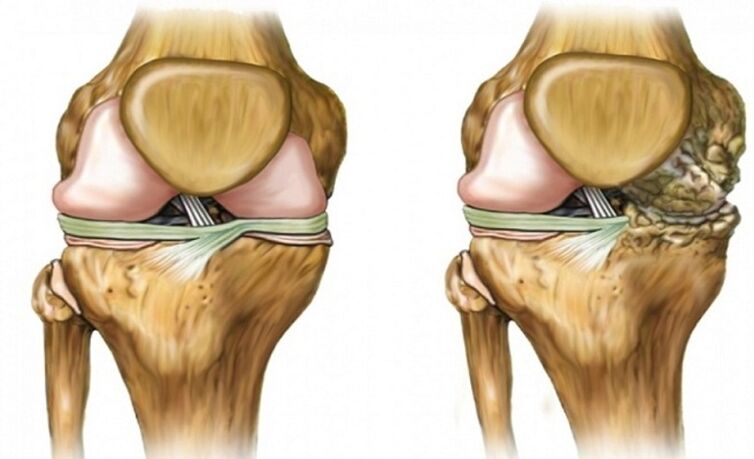
- Primary.It is a natural process that is found in people under the age of 40 and is explained by the aging of body tissues.The primary mechanism of arthrosis development also contributes to related factors, including obesity, inheritance, or high load.
- Medium - It includes 30% of all diseases of arthrosis.The cause of the accident is associated with the transmission of mechanical injuries, lower leg fractures, or ligament breakdown.The first symptoms of the pathology may appear several years after the damage.However, with severe injuries, it can occur after 2-3 months.
There is another development mechanism that holds 7-8% of cases of arthrosis.As follows: If a person under the age of 40 has suddenly started running or professional sports, this can lead to rapid dystrophic and degenerative changes.In addition, arthrosis is also manifested by concomitant diseases, including arthritis, gout, overweight, etc.
The causes of the disease are often associated with frequent increased loading, weight climbing or steps (especially in old age).Patients who suffer from spinal injuries or neurological diseases also enter the risk zone.
In most cases, gonartrosis -prone factor is a muscle spasm on the anterior surface of the thigh.After the first pain appears, the pathology may not appear for a long time, and the only signs will be characteristic of fatigue and gravity in the legs.
Developmental stages and symptoms
Depending on what knee joint arthrosis appears, you can begin to study the basic symptoms and stages of the disease development.Experts argue that the pathology is characterized by slow progression as negative symptoms increase.Depending on the patient's ability to work, three stages of arthrosis are distinguished:
- First.
- Second.
- Third.
It should be noted that gonarthrosis does not have an acute form, of course, as it is a chronic degenerative process.As for the term "acute arthrosis", in most cases it applies to the third stage of weighty symptoms.
The first stage
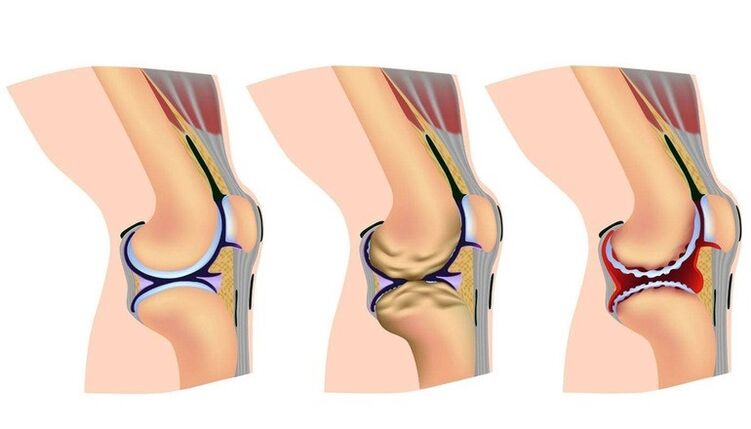
In the first stage of gonarthrosis in the joint, the special fluid circulation begins to disrupt it, which feeds it and lubricates.There is no special changes in the structure and the cartilage tissue is slightly lit.
The initial stage of arthrosis development is accompanied by slight discomfort and a sense of gravity during movement.The patient becomes problematic on climbing steps, to make distant races, or to stand up for a long time.Any increased activity causes pain in the knees.However, during the slightest rest, the pain syndrome is localized and disappears.
Further progression of the pathology exacerbates the pain, but the patient's ability to work is in no way concerned.In this regard, the patient continues to lead the usual lifestyle.
It is not easy to determine the development of arthrosis at an early stage.The fact is that people may simply not notice the symptoms that give everything over work.
The second and third degree
It may take several months between the initial symptoms and the transition to the pathology in the second stage.At the same time, the patient can forget about the first symptoms for some time and continue to live in the usual life.But the progression of degenerative changes will lead to more serious consequences, namely:
- Enhanced pain with any load.
- Movement Station.
- Swelling.
- Inflammation.
In addition to the symptoms described, it appears in the knee joints crunch, which is explained by the disruption of the structure.The cartilage tissue begins to be skinny, and the volume of synovial fluid that lubricates and feeds is significantly reduced.
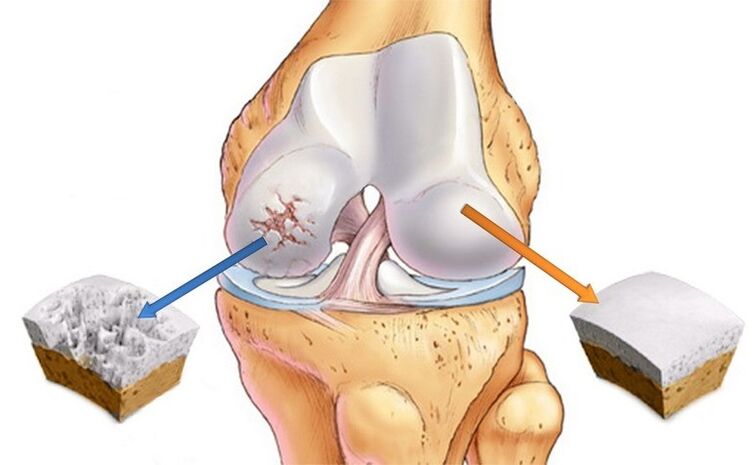
If the patient has not begun treatment in the second stage of arthrosis, it will lead to a third, more dangerous development.It is a very neglected form of the pathology in which the joint loses its basic functioning, while the patient's ability to work is at risk.
In this case, the content of the synovial fluid in the cartilage tissue becomes minimal, the cartilage loses its anterior thickness, and the bones are thickened.The affected side also appears in the lymphatic fluid and the inflammatory process begins.
In advanced form, Gonartross has such symptoms:
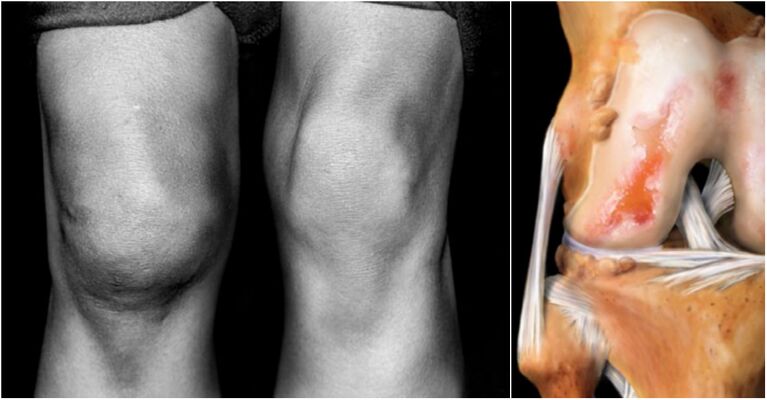
- Over -strong pain syndrome that occurs in any movement.Moreover, even if the patient is deceived or sitting without activity, he or she can suddenly feel severe pain.
- The motor capacity of the knee joint is significantly limited.
- The joint undergoes many changes, increases in size and deformation.Such results can be noticed by the naked eye.
As for acute pain syndrome in the third stage of arthrosis, it appears spontaneously and is virtually not localized in pharmacies by painkillers.In this case, joint prosthesis is the only solution to the situation.
In particularly difficult forms of Gonathross, experts distinguish at another stage in which the destruction of the joint bag begins.Unfortunately, in modern medicine there are no effective ways to treat pathology that have moved to 2 and 3 stages.In this sense, doctors recommend timely help at the clinic if the slightest suspicion of gontrosis is identified.
Diagnostics
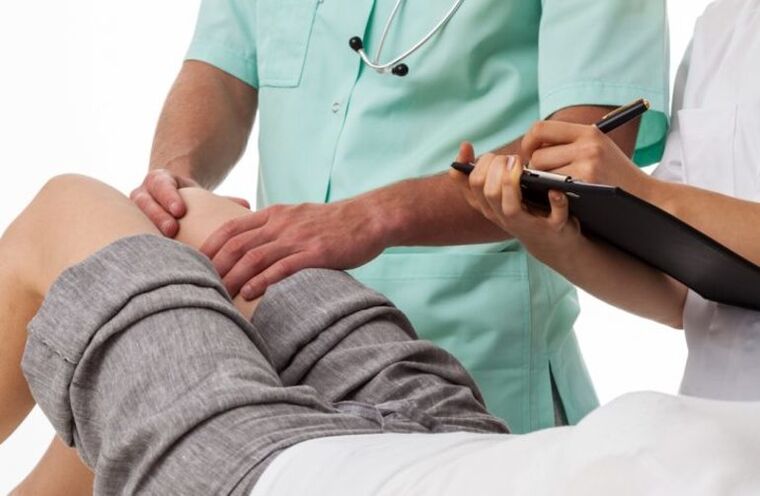
Given understanding the causes of gonarthrosis, it is important to know about the correct diagnosis of pathology.After all, you should be able to distinguish it from other diseases that may have similar symptoms.
A comprehensive examination is used to determine the development of the disease, which includes biochemical blood test, radiography, MRI and ultrasound.It should be noted that at different stages of arthrosis, the blood composition is almost similar, so any change in the norm indicates the presence of another problem.
In relation to this characteristic, it is possible to make an accurate diagnosis and determine the presence of gonarthrosis only with the help of x -ray examination.The taken image clearly shows disorders in the structure of the joints and bones and also determines surface defects.
However, despite the high accuracy of the diagnosis, x -ray cannot study soft tissues, including cartilage and pelvis.As an additional product to determine the diagnosis, ultrasound, MRI or CT is used.
If you determine the development of pathology in a timely manner and start a comprehensive treatment, this will prevent irreparable results and prevent the problem from moving to a more serious stage.However, due to the specific course of the disease, many patients do not even believe that joint pain, firmness and other changes are not the result of fatigue after hard work, but a sign of the beginning of degenerative processes.
Treatment Methodology
Currently, there are many ways to treat gonarthrosis.They may vary in the principle of action, the list of tasks, as well as the individual characteristics.For a more productive struggle against the disease, a comprehensive treatment is used to:
- Pain localization.
- Improving mobile functions.
- Improve the condition of cartilage tissues and the whole patient.
- Strengthening the muscle structure surrounded by the affected joint.
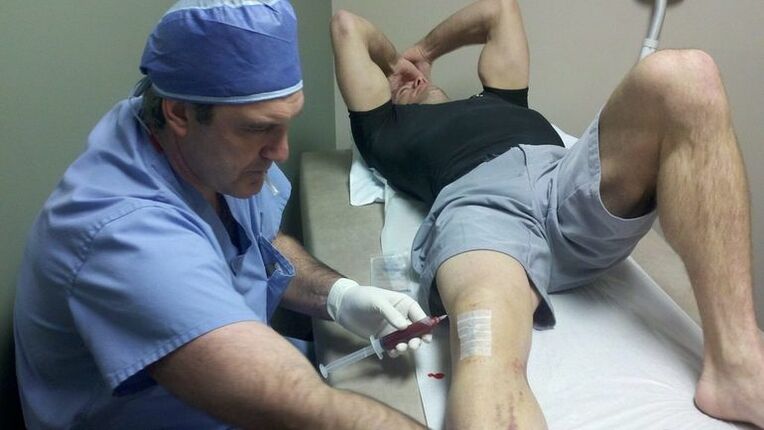
The most common methodology for treating arthrosis is physiotherapy.It involves a set of special procedures that aims to strengthen muscle tissues and restore blood circulation.
During physiotherapeutic treatment, the patient has noticed significant improvement during wells and slowes down degenerative processes.However, it is strictly forbidden to start the procedure independently, as improperly calculated loads can only exacerbate the problem.
Pain from pain, relief, swelling and inflammation, it is necessary to use many non -estroid types.This includes ibuprofen, ketoprofen, diclofenac and others.The task of the drug is to quickly relieve pain for more productive treatment in the future.
If the use of non -anti -anti -anti -anti -anti -anti -anti -anti -anti -anti -anti -medications, you will need to apply corticosteroids with a more pronounced anti -anti -anti -anti -anti -anti -anti -anti -anti -anti -anti -anti -anti -corticosteroid effect.However, it is not recommended to use painkillers for a long time as they only reduce the symptoms, slow down the tissue recovery process.If the pain is gone after taking any tablet, it is best to refuse medication.
External joints and surgical intervention
Causes of joint combat arthrosis with the help of various ointments, compresses and creams.And although these medications are not treated with arthrosis, they improve the patient's well -being and reduce pain.Among the most effective external remedies, warming and antique ointments are distinguished.
With the development of the second stage of the disease, the patient may prescribe intracellular injections of corticosteroids, namely:
- Betamethasone.
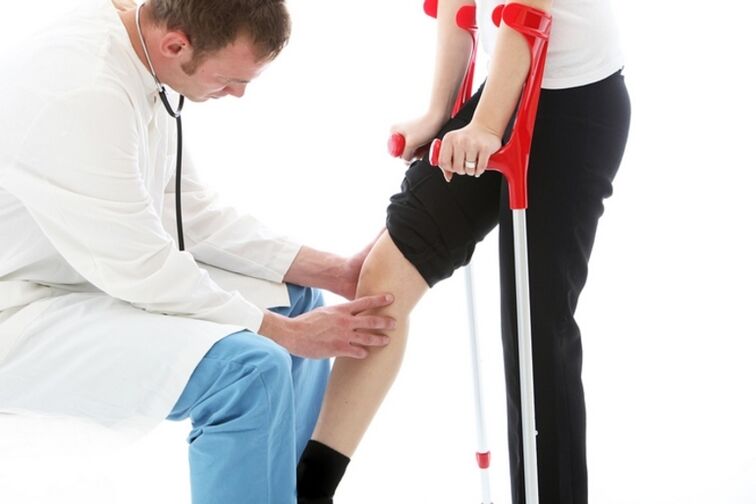
When choosing a drug, it is necessary to consider the patient's tolerance.If we are talking about corticosteroids, then they can effectively eliminate pain but do not cope with severe stages of arthrosis.
If the disease is at the last stage, which is the most dangerous, surgery will be the only solution.In this case, you will have to carry a joint bag to expand surgical decompression to expand the lumen between the bones and to restore cartilage surfaces.
Whether this approach will be effective, it depends on many factors.First, you need to consider the severity of the disease.If it is not the most deplorable, it is quite possible to restore the former mobility of the joints and get rid of pain.
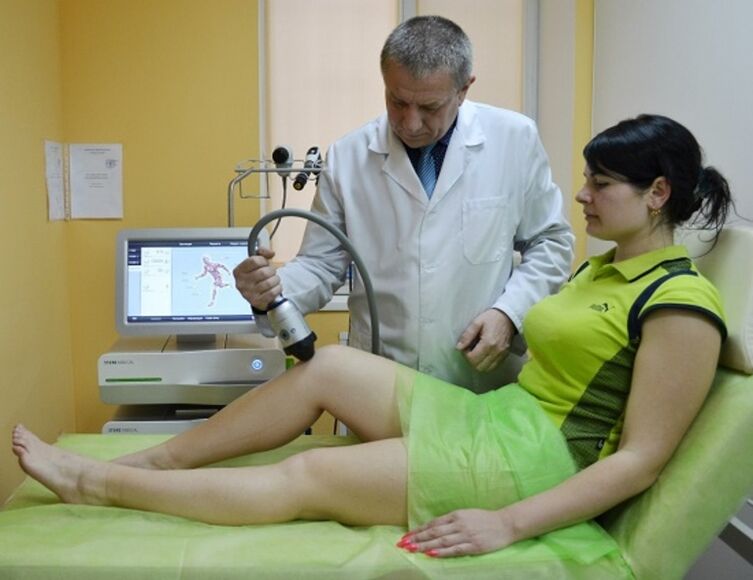
However, the bumps will still feel, so the patient should seriously review the lifestyle.You will also need to pay close attention to physiotherapy exercises, proper nutrition and adequate physical activity.
As a prevention, it is advisable to abandon the consumption of salted or spicy foods, spirits and cigarettes.Such actions will positively affect the condition of the body and save the joint from excessive loads.
Comprehensive treatment of arthrosis in accordance with the above recommendations is the best way to stop a dangerous pathology and restore the previous knee joint operation.

















































